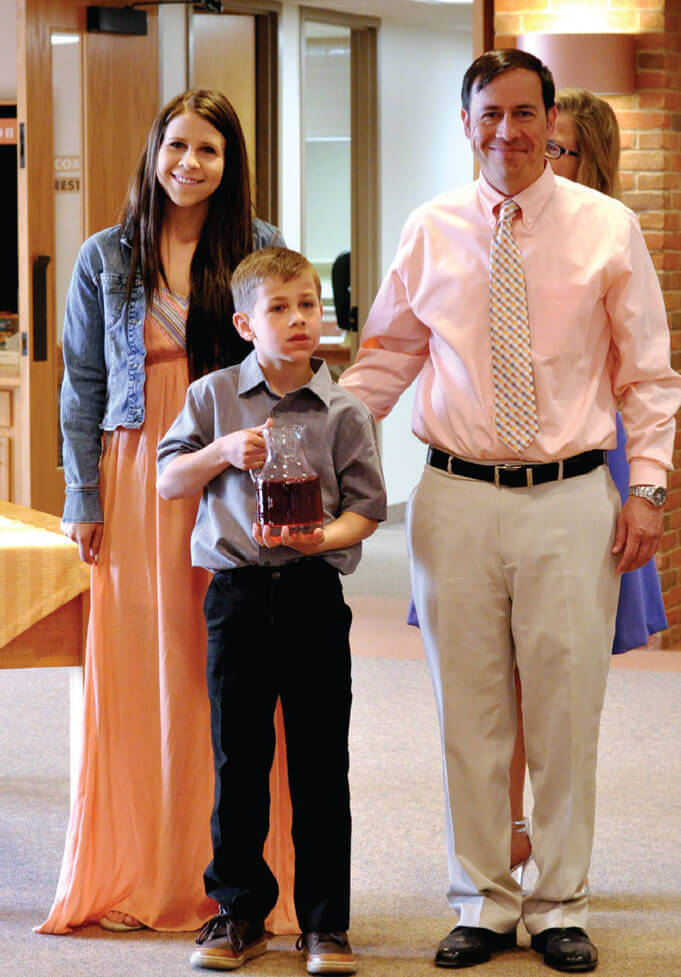
Like a jazz piece in which musicians play a simple melody before spinning out countless variations, John in his chapter six tells the core story of Jesus multiplying loaves and fishes before he reflects at length theologically on all this sign expresses. Even the core story is elaborate. The disciples Philip and Andrew raise perennial problems.
The disciples’ conversation with Jesus shows they keep bumping into limits, hitting the wall. Five loaves and two fish are obviously too little to feed the hungry crowd. However, then as today, the limits the community faces don’t turn on how much or little food is available. The real crisis lies in the disciples’ own resources. Their limitations become the Church’s limitations.
Philip is limited in imagination. He sees they can’t possibility feed the crowd. In our own time do we hear echoes of Philip in voices that say, “There are not enough priests, so we can no longer have the bread of life for everybody who is hungry.”
Andrew is more imaginative than Philip. He notices the boy with the loaves and fish and prefers to feed some people rather than none. Andrew also recognizes that five loaves and two fish are entirely inadequate to feed the whole gathered group.
In our day dioceses have clustered faith communities, so priests can gather more people for Eucharist and serve them. Some protest the closing of their parishes. Some happily join the new clusters. Some lose interest in making relationships in the new community.
The boy never speaks to tell how he sees the crisis of resources. He adds the dimension of youth to John’s account. He seems willing to share all that he has, hopeful that someone will make a little into something more. He is open to possibilities where his elders see limitations.
The boy must recognize his five loaves and two fish will feed only a few people, but he willingly brings what he has to Jesus. It proves enough.
- How has the pandemic affected the value you place on Sunday Eucharist?
- When have you experienced a little help making a big difference?
- When have children called you to action and hope again?
The 5,000 are following Jesus because of the signs he has worked. His first sign is changing water to wine at a wedding in Cana. His second is healing the son of a royal official. Jesus challenges the official, “Unless you see signs and wonders you will not believe.” Indeed the official does believe and his son is saved (John 4.50). Then Jesus heals a man ill and paralyzed for 38 years (John 5.1-9). The narrative has built up reasons for people to flock to Jesus.
The crowd finds plenty of grass for everyone to sit on and plenty of food to satisfy their hungers. Five thousand people make for less than intimate table sharing, yet as the host at this gathering, Jesus creates the common ground for forming new relationships. The scene suggests the universality of the Body of Christ, the community Jesus continues to feed down the centuries and throughout the world.
The twelve baskets of leftovers also hint at universality. It’s the number of all the tribes of Israel. Twelve is a number symbolizing abundance. The food Jesus gives increases in being given. The crowd has more food left over than there was to start. It works like love.
After the feeding, the crowd wants to make Jesus their king. They know because they have eaten that he has the power to satisfy their hungers. They misunderstand his power.
The crowd tries to force him into a power role that does not fit who Jesus is. He will not satisfy their hunger for a victorious, all-providing king.
At this point Jesus disappears. He goes back up the mountain where he fled at the beginning of the story. The crowd doesn’t find him there.
- What hungers do you feel today? What helps nourish them?
- What hunger does sharing Sunday Eucharist satisfy for you?
